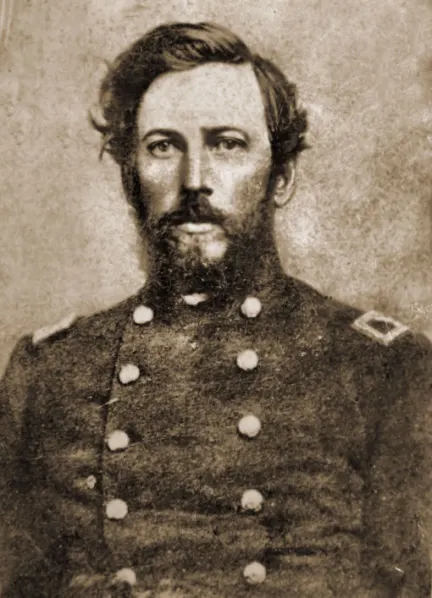Of all the books that circulate the civilized portions of the globe none has had more of an impact on the consciousness of human intervention than that of the Holy Bible. Indeed, with its prophetic visions and dissertations on the subject of Salvation, Redemption and Vengeance, it is impossible to elaborate on any of these topics without using superlatives; however, it is has grown into ignorance and gross misunderstanding to the common mind as to make an accurate and candid calculation, or, perhaps, a prediction on the subject of “time of the end.”
One such human, in great secrecy, did create an elaborate tapestry of the apocalypse and its inevitable outcome on humanity; albeit, causing a deep resentment and vexation among his constituents had they known he indulged in such dark and fearful compositions. The man: Isaac Newton.
Among his royal achievements in mathematics and physics, Newton possessed an intensely dark side; he was convinced that he possessed esoteric knowledge of prophecy and scripture. By meticulous and obsessive biblical study, Newton gained extraordinary perception into the eschatology of scripture.
He asserts his findings first in the 1st Book of Kings where the commencing of Solomon’s temple is related in chronological detail; Newton believed that the temple itself was a “mystical” mathematical problem that could only be deciphered by prophets (which he was convinced he was). In his view, the Temple of Solomon was constructed by the divine grace of Yahweh; he was also convinced that the temple was much more than just a mathematical blueprint. As his observations deepened, he saw the temple as a biblical chronology of the Hebrew people; also, as a mathematician, he was particularly interested in the “sacred geometry” of the temple, such as the golden sections, conic sections, spirals, orthographic projections, and other acoustic constructions. Through arduous and meditative study, Newton believed that the architects of the temple hid their knowledge in a complex system of mathematical and symbolic code in the temple itself that contained the secret of human nature. In 1675 he wrote: “The philosophy, both speculative and active, is not only to be found in the volume of nature, but also in the sacred scriptures, as in Genesis, Job, Psalms, Isaiah and others. In the knowledge of this philosophy, God made Solomon the greatest philosopher in the world.”
Taking his knowledge of the physical and mathematical construction of the temple, he used the Bible to acquire dates for his prophecy as I will make an attempt to briefly calculate: Newton conceived his predictions primarily from two sources: The Book of Daniel and The Book of Revelation. In the book of Daniel, he makes extensive use of the last chapter, 2 verses in particular: “The man clothed in linen, who was above the waters of the river, lifted his right hand and his left hand toward heaven, and I heard him swear by him who lives forever, saying, “It will be for a time, times and a half time”(Daniel 12:7). “From the time that the daily sacrifice is abolished and the abomination that causes desolation is set up, there will be 1,290 days. Blessed is the one who waits for and reaches the end of 1,335 days” (Daniel 12:11). As one reads, these are very difficult verses to interpret, and books have been composed on just this alone. Newton’s interpretation is as follows. The 1,290 days are not days, they are years. 1,290 years is the length of time that it will take the Jewish people to, once again, regain their temple. But the Bible does not give a starting point, so Newton composed his own. He explored many dates throughout ALL the European history of his time until the emergence of Christianity; after detailed calculations and mathematical experimentations, he produced the year 609 A.D. This is the year when the Roman Empire relinquishes some of its authority to the Christian Church; that is, this is the infancy of papal authority in Europe. If we calculate 1,290 with 609, we produce the year 1899 A.D. This is the year in which the height of Zionism is most prevalent in Europe; the school of theology that Jewish people will embrace as the return of the temple to Jerusalem. The second value of numerical theory arrives with his calculation of 1,335 and 609. The answer, of course, is 1944; though it is absurd to contemplate that Newton could conceive the magnitude of World War 2 and the independence of Israel in 1948, his estimation of the return of the temple spanning a two-thousand-year history based on his original projections is a little more than mischievous conjecture.
Another prominent date to the arrival of Armageddon for Newton is the year 800. This was a year of supreme importance for the Christian church. The emperor Charlemagne was crowned by Pope Leo the 10th on Christmas Day; this signified the culmination of the Holy Roman Empire which would induce the rest of Europe with the teachings of Jesus Christ and establish his religion as the center of practice throughout Europe. Moving to the Book of Revelation, Newton, again, reads a startling prophecy, much like in the Book of Daniel: “Blessed is the one who reads of the prophecy, and blessed are those who hear and who keep what is written therein; for the time is near” (Revelation 1:3). “The woman was given the two wings of a great eagle, so that she might fly to the place prepared for her in the desert, where she would be taken care of for a time, times and a half time, out of the serpent’s mouth” (Revelation 12:14).
How did Newton interpret “time, times and a half time”? Once again, Newton converts days to years: A time is one year; 2 times is 2 years; however, a Half Time is 6 months. If Newton is correct in assuming the Book of Daniel was based on a 360 day year, the math is as follows: 1 year is 360 days; 2 years is 720 days and a Half Time is 180 days. The grand total is 1,260 days converted back into years. He then took 1,260 and added it to the year 800(which he believed was the most important date in Christendom) and got 2060, the year of the end of the world. He later writes: “The time, time and half time do not end before 2060 nor after.” Attempts to establish and use his prophecies for a sensational or public gain is not uncommon knowledge in the area of the general public, especially since the recent revival of the Mayan calendar; indeed, Newton’s prophecies are sometimes accidentally linked to that of Nostradamus or Edgar Cayce, though I hardly would annex any of their predictions or writings with that of Newton; he was much more sacerdotal in the clandestine essence of the art of prophecy. Though he vehemently rejected papal authority and any trinitarian dogma, he was still enraptured by the idea of a merciful God and Creator who furnished the universe with the motion of the planets and stars; to Newton, God is the unprecedented force that rules the heavens and navigates the time of the earth until his time which seeks an end, if he so chooses. He considered himself a very “select” choice of interpreting the Bible, given by God to instruct his continuing age of creation to bask in the awesomeness and splendor of that which is seen and studied by men, but never duplicated in the splendid fashion as that of the Divine Hand.
The sacred instruments of time and space held tremendous wonder for Newton. His eloquent gift of biblical prophecy can still be studied, not only for its mathematical fascination and beauty, but for its construction of solid biblical scholarship of which he tirelessly labored. We are not the creators of our own existence; we are not the magicians of our own soul or our complicated and menacing solitude of nature. We are not the arbiters of our afterlife if one is entitled to it. But we are the architects of creativity, passion, bliss, and, sadly, destruction. In closing, the poet Percy Bysshe Shelley said more than he knew: “Before man can be free, and equal, and truly wise, he must cast aside the chains of habit and superstition; he must strip sensuality of its pomp, and selfishness of its excuses, and contemplate actions and objects as they really are. He will discover the wisdom of universal love; he will feel the meanness and the injustice of sacrificing the reason and the liberty of his fellowmen to the indulgence of his physical appetites and becoming a party to their degradation by the consummation of his own.”

© 2024, Mark Grago. All rights reserved.




